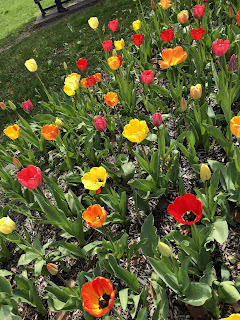What does the 1970s Energy Crisis have in common with the 1966. 1980 and 2005 transit strikes in New York?
Each of those events motivated thousands of people to commute by bicycle. Only the 2005 stoppage, however, seems to have resulted in significant numbers of permanent or even long-term bicycle commuters.
 |
| Commuters on the Queensborough (59th Street) Bridge during the 1980 NYC Transit strike. Photo by Fred R. Conrad for the New York Times. |
The 1970s Oil Embargo affected the entire United States as well as other countries. Some of those who turned to pedaling two wheels had been driving four wheels and, once gasoline supplies returned and prices leveled off, returned to their cars.
To be fair, many of those temporary bike commuters depended on their automobiles because they lived and worked in areas where mass transit was scant or non-existent. On the other hand, most situational cyclists returned to their old commuting routines, whether by subway or bus, once the 1966 and 1980 strikes ended. Some didn't care for riding in rain or cold; others just didn't care for cycling.
But those aren't the only reasons why those service disruptions didn't create many lifetime cyclists, if you will, in the way the 2005 strike did. In 1966, the North American Bike Boom was a few years on the horizon. New York City was one of the few places in the United States with significant (if still relatively small) numbers of adult cyclists; even so, most people still regarded bike riding as a kid's activity and bikes as toys.
By 1980, the Bike Boom was a few years in the rear-view mirror. Some people who bought Schwinns and Peugeots and Raleighs continued riding them, so even those whose feet never touched a pedal knew someone who rode to work or for pleasure. In other words, an adult who rode a bike wasn't as much of an anomaly in New York, or much of the US, as it was a decade and a half earlier. Never underestimate self-consciousness as a factor in someone's choice to ride--or not.
Someone riding to work in a dress or a suit was even less of an aberration in 2005 than he or she would have been a quarter-century earlier. That, I believe, is a reason why fewer of them returned to buses and trains than their earlier counterparts did. In general, the public was more conscious of cycling and cyclists. It was around that time that the first traces of a cycling infrastructure, such as it is, started to take shape in the Big Apple. So, some who might have been uneasy about spinning through traffic felt, with or without justification, safer in riding the newly-constructed bike lanes--and more confident about parking their bikes in the dedicated racks that began to appear on city streets.
Even so, the health benefits (mental as well as physical) they derived from cycling to work weren't enough to keep some people from reverting to their old commuting habits. I would bet some gave up on bike commuting when they got a flat or had some other malfunction en route and couldn't fix it. Or they tried to use a bike that hadn't been ridden in years only to discover, well, why it hadn't been ridden in years.
Some French officials seem to understand as much. They also want to enforce social-distancing mandates that will remain in effect once the country's lockdown (one of the strictest in the world) is lifted on the 11th. However you define "social distancing," it's impossible on a half-full metro car, let alone one that's packed with rush-hour commuters. Thus, the French government wants to encourage people to continue (or start) cycling, rather than taking mass transportation.
The result is a program--"Coup de Pouce Velo" (Bike Boost)-- that includes, among other things, up to 50 Euros (about $55 at current exchange rates) cyclists can use toward repairs, or on helmets, lights or other safety accessories, at partner bike shops. Also included in CPV will be funds for temporary bike parking (new permanent facilities are in the works) as well as educational sessions with program-affiliated schools and coaches.
In announcing the program, French Environment Minister Elisabeth Borne tweeted, "Nous voulons que cette periode fasse franchir une etape dans la culture velo, et la bicyclette soit la petite reine du deconfinement." We want this time, she said, to mark a step forward in bicycle culture, and for the bicycle to be the queen of de-confinement."
The "queen of deconfinement". (All nouns in French are masculine or feminine; the bicycle, whether it's called "velo" or "bicyclette," is feminine.) I think Ms. Borne understands something else about cycling: It's freedom for so many of us!
































